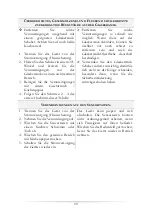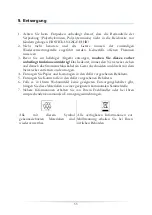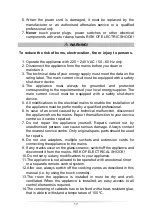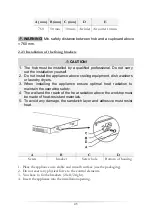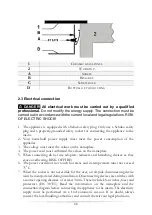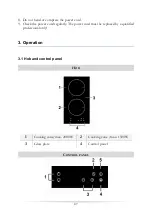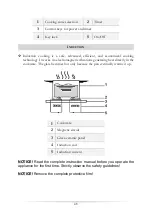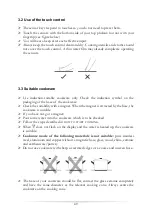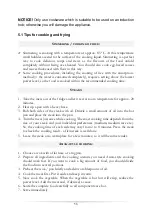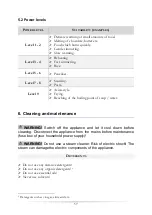
43
2.1 Unpacking and positioning
1.
Unpack the appliance carefully. Dispose of the packaging as described in chapter
WASTE MANAGEMENT
.
2.
The appliance may be equipped with a transport-protection. Be very careful and
do not use any aggressive or abrasive detergents to remove residuals of the
transport-protection.
3.
Check that the appliance and the power cord are not damaged.
4.
Connect the appliance to a dedicated socket only.
5.
Do not install the appliance in a place where it may come in contact with water
or rain; otherwise the insulation of the electrical system will be damaged.
6.
Connect the appliance to the mains properly.
2.2 Installation
2.2.1 Ensure before the installation
➢
The worktop must be rectangular and plane and made of heat-resisting material.
Structural elements should not interfere with the installation area.
➢
The installation must meet the safety requirements as well as the legal rules and
regulations.
➢
The wall sat the hob should be covered with heat-resistant material, e.g. ceramic
tiles.
➢
The power cable must not come into contact with cabinet doors or drawers.
➢
The appliance must be supplied with an adequate flow of fresh air from outside
the cabinet to the base of the hob.
➢
If the hob is installed above an oven, the oven must be equipped with a cooling
system.
➢
Install a thermal protection below the bottom of the appliance when installing it
above a drawer or a cupboard.
➢
The circuit breaker must be easily accessible.
2.2.2 Selection of installation equipment
Cut out the installation hole as described on the drawing below. For installation and
use, a minimum of 50 mm space shall be preserved around the hole. The thickness
of the work top should be at least 30 mm. Choose heat-resistant materials for the
work top only to avoid any deformation caused by the heat-radiation of the
appliance.

